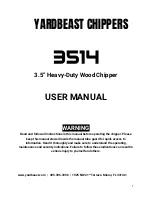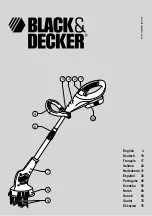
7
1 - INTRODUCTION
Protection device checks:
• If no national regulations exist, check the protection
devices on site in accordance with standard EN 378:
once a year for the high-pressure switches, every five
years for external relief valves.
The company or organisation that conducts a pressure switch test
must establish and implement detailed procedures for:
-
Safety measures
-
Measuring equipment calibration
-
Validating operation of protective devices
-
Test protocols
-
Recommissioning of the equipment.
Consult Carrier Service for this type of test. Carrier mentions here
only the principle of a test without removing the pressure switch:
-
Verify and and record the set-points of pressure switches
and relief devices (valves and possible rupture discs)
-
Be ready to switch-off the main disconnect switch of the power
supply if the pressure switch does not trigger (avoid over-
pressure or excess gas in case of valves on the high-pressure
side with the recovery condensers)
-
Connect a pressure gauge protected against pulsations (filled
with oil with maximum pointer if mechanical), preferably
calibrated (the values displayed on the user interface may
be inaccurate in an instant reading because of the scanning
delay applied in the control)
-
Complete an HP Test as provided by the software (refer to
the Control IOM for details).
If the machine operates in a corrosive environment, inspect
the protection devices more frequently.
Regularly carry out leak tests and immediately repair any
leaks.
Ensure regularly that the vibration levels remain accep table
and close to those at the initial unit start-up.
Before opening a refrigerant circuit, purge and consult the
pressure gauges.
Change the refrigerant after an equipment failure, following
a procedure such as the one described in NF E29-795 or carry
out a refrigerant analysis in a specialist laboratory.
Plug all openings whenever the refrigerant circuit is opened
for up to one day. For longer openings place a nitrogen charge
in the circuit.
1.4 - Repair safety considerations
All installation parts must be maintained by the personnel in
charge, in order to avoid material deterioration and injuries to
people. Faults and leaks must be repaired immediately. The
authorized technician must have the responsibility to repair the
fault immediately. After each repair of the unit, check the operation
of the protection devices and create a report of the parameter
operation at 100%.
Comply with the regulations and recommendations in unit and
HVAC installation safety standards, such as: EN 378, ISO 5149,
etc.
If a leak occurs or if the refrigerant becomes contaminated (e.g.
by a short circuit in a motor) remove the complete charge using
a recovery unit and store the refrigerant in mobile containers.
Repair the leak detected and recharge the circuit with the total
R-134a charge, as indicated on the unit name plate. Certain parts
of the circuit can be isolated. Only charge liquid refrigerant R-134a
at the liquid line.
Ensure that you are using the correct refrigerant type before
recharging the unit.
Charging any refrigerant other than the original charge type
(R-134a) will impair machine operation and can even lead to
a destruction of the compressor. The compressors operating
with this refrigerant type are lubricated with a synthetic
polyolester oil.
RISK OF EXPLOSION
Never use air or a gas containing oxygen during leak tests to
purge lines or to pressurise a machine. Pressurised air
mixtures or gases containing oxygen can be the cause of an
explosion.
Only use dry nitrogen for leak tests, possibly with an
appropriate tracer gas.
If the recommendations above are not observed, this can
have serious or even fatal consequences and damage the
installation.
Never exceed the specified maximum operating pressures.
Verify the allowable maximum high- and low-side test
pressures by checking the instructions in this manual and
the pressures given on the unit name plate.
Do not unweld or flamecut the refrigerant lines or any
refrigerant circuit component until all refrigerant (liquid and
vapour) has been removed from chiller. Traces of vapour
should be displaced with dry air nitrogen. Refrige rant in
contact with an open flame produces toxic gases.
The necessary protection equipment must be available, and
appropriate fire extinguishers for the system and the
refrigerant type used must be within easy reach.
Do not siphon refrigerant.
Avoid spilling liquid refrigerant on skin or splashing it into
the eyes. Use safety goggles. Wash any spills from the skin
with soap and water. If liquid refrigerant enters the eyes,
immediately and abundantly flush the eyes with water and
consult a doctor.
The accidental releases of the refrigerant, due to small leaks
or significant discharges following the rupture of a pipe or
an unexpected release from a relief valve, can cause frostbites
and burns to personnel exposed. Do not ignore such injuries.
Installers, owners and especially service engineers for these
units must:
-
Seek medical attention before treating such injuries.
-
Have access to a first-aid kit, especially for treating eye
injuries.
We recommend to apply standard EN 378-3 Annex 3.
Never apply an open flame or live steam to a refrigerant
container. Dangerous overpressure can result. If it is
necessary to heat refrigerant, use only warm water.
Содержание Aquaforce 30XAS Series
Страница 2: ...2...








































